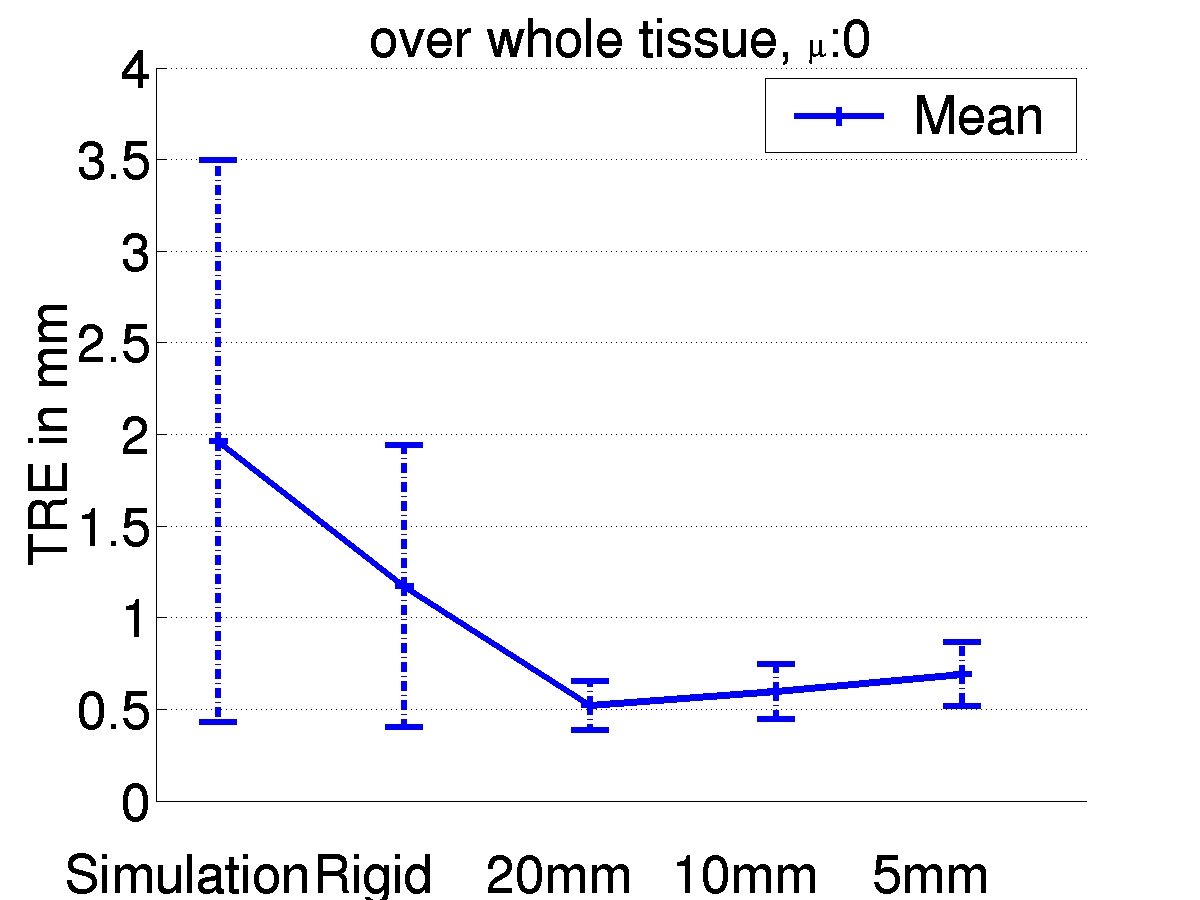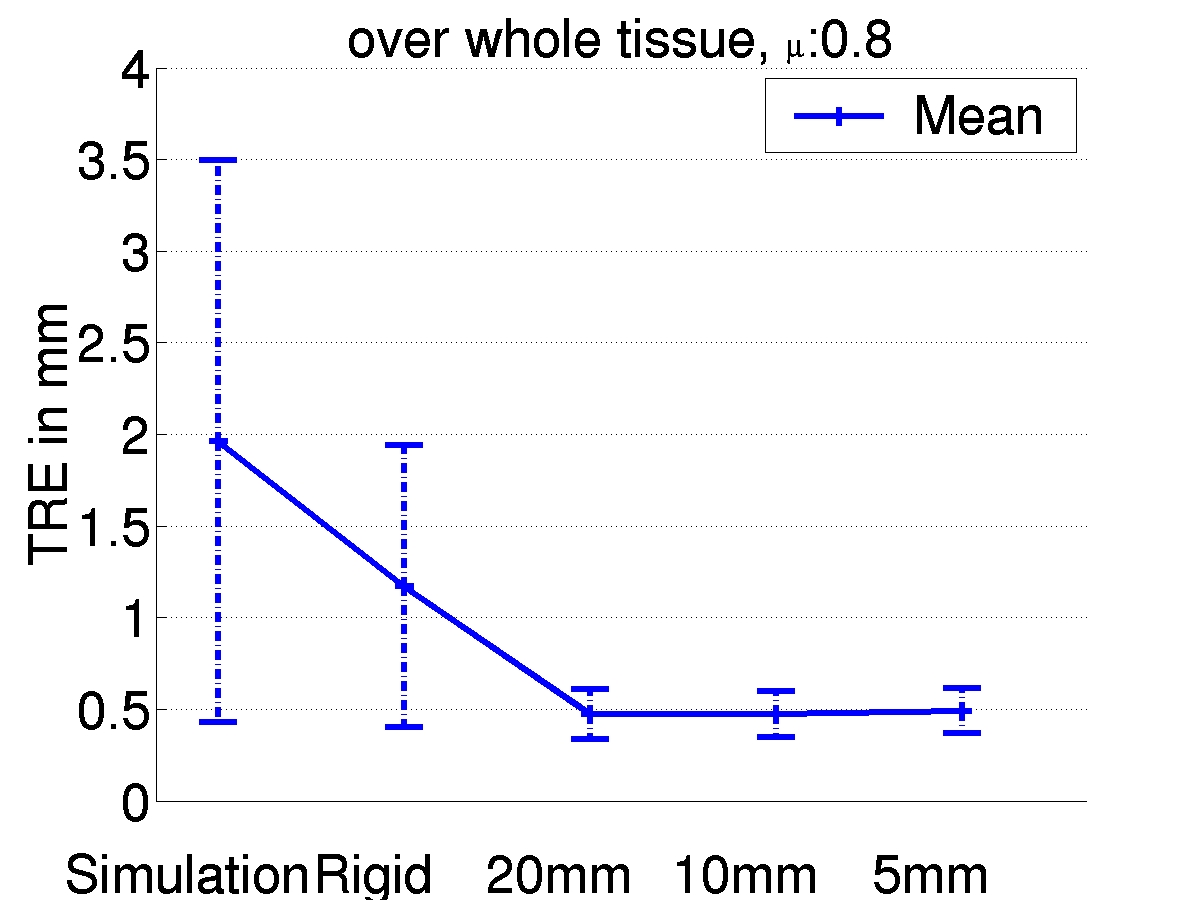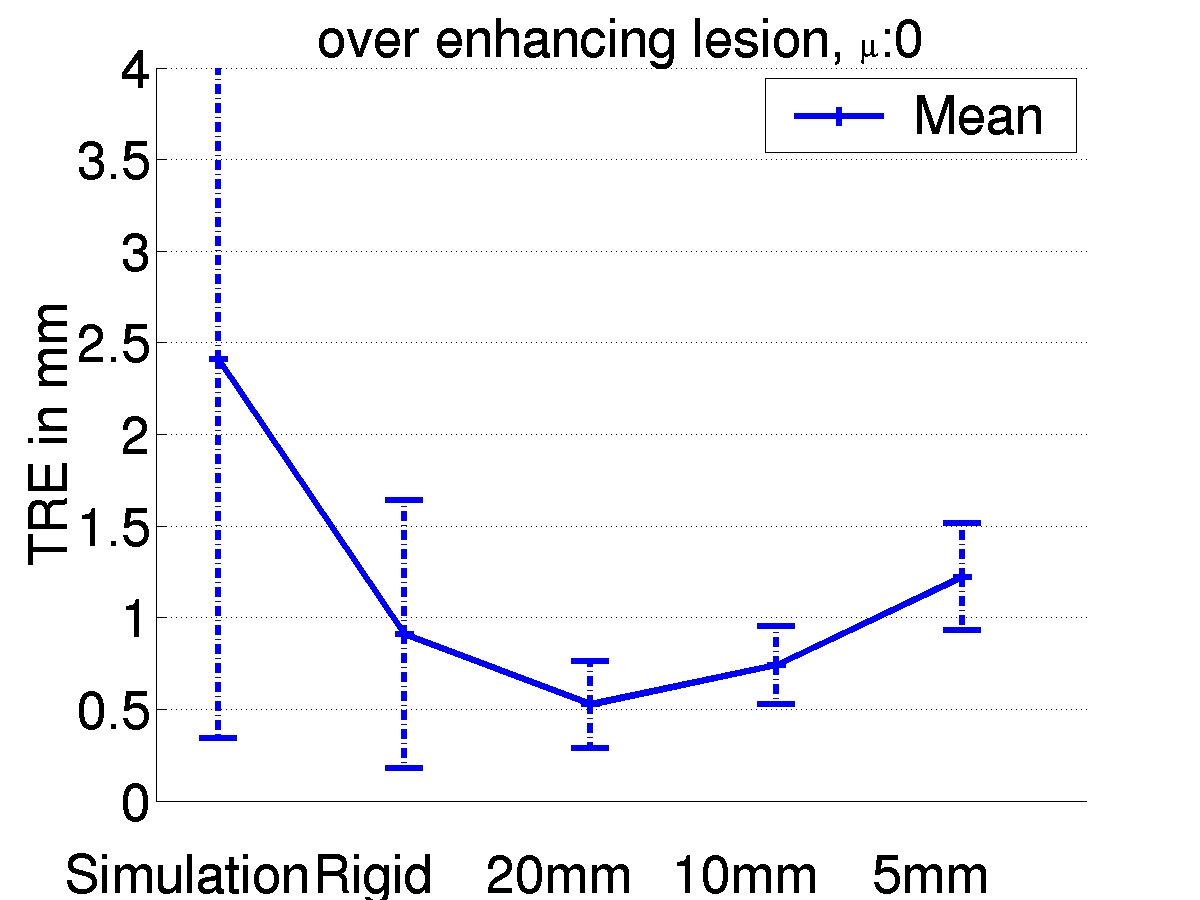Validation of volume-preserving non-rigid registration:
Application to contrast-Enhanced MR-mammography
Initial validation studies have been conducted to compare the
single- and multi-level registration strategies [9] and to assess the
usefulness of a volume-preservation constraint [10].
METHOD
Three images pairs, where no motion was visible between pre- and
post-contrast image, were selected from a large database.
For each patient, four deformations were generated and target
registration errors were determined as described in [7].
RESULTS
(a) (b)
(b)
(c) (d)
(d) Figure 1: Target registration error (TRE)
after simulation, rigid registration
and multi-resolution non-rigid registration
with control point spacing of 20mm, 20mm->10mm and
20mm->10mm->5mm.
TRE was evaluated over (a,b) the
whole breast tissue and (c,d) the region of the enhancing
lesion for (a,c) the unconstrained non-rigid registration and (b,d)
the volume-preserving non-rigid registration.
The graph shows the mean and standard deviation of TRE for three
patients and four deformations. (from [10])
Figure 1: Target registration error (TRE)
after simulation, rigid registration
and multi-resolution non-rigid registration
with control point spacing of 20mm, 20mm->10mm and
20mm->10mm->5mm.
TRE was evaluated over (a,b) the
whole breast tissue and (c,d) the region of the enhancing
lesion for (a,c) the unconstrained non-rigid registration and (b,d)
the volume-preserving non-rigid registration.
The graph shows the mean and standard deviation of TRE for three
patients and four deformations. (from [10])
CONCLUSIONS
We found that the volume preserving non-rigid registration was
more accurate than the unconstrained method.
Severe local deformations were better compensated by finer
control point spacing.
However, the contrast enhancing lesions were
more accurately aligned at a control point spacing of 20mm.
References:
[10] C. Tanner, J. A. Schnabel, A. Degenhard, A. D. Castellano-Smith,
C. Hayes, M. O. Leach, D. R. Hose, D. L. G. Hill, D. J. Hawkes.
Validation of volume-preserving non-rigid registration:
Application to contrast-Enhanced MR-mammography.
In Proc. Medical Image
Computing and Computer-Assisted Interventions (MICCAI 2002),
Tokyo, Japan, September 2002, vol. 2489 of
Lecture Notes in Computer Science, pp. 307-314, Springer Verlag,
2002.
[9] J. A. Schnabel, C. Tanner, A. D. Castellano-Smith, A. Degenhard,
C. Hayes, M. O. Leach, D. R. Hose, D. L. G. Hill,
D. J. Hawkes. Finite element based validation of non-rigid
registration using single- and multi-level free-form deformations:
Application to contrast-enhanced MR mammography. In M. Sonka and
J. M. Fitzpatrick, editors, Proc. SPIE Medical Imaging 2002: Image
Processing, San Diego, CA, pp. 550-581, 2002.
[7] J. A. Schnabel, C. Tanner, A. D. Castellano-Smith, A. Degenhard,
M. O. Leach, D. R. Hose, D. L. G. Hill, D. J. Hawkes.
Validation of
non-rigid image registration using finite element methods:
Application to breast MR images. IEEE Transactions on Medical
Imaging, vol. 22(1), 2003. In press.
Last modified: Sun Feb 9 12:50:44 GMT 2003
 (b)
(b)
 (d)
(d) Figure 1: Target registration error (TRE)
after simulation, rigid registration
and multi-resolution non-rigid registration
with control point spacing of 20mm, 20mm->10mm and
20mm->10mm->5mm.
TRE was evaluated over (a,b) the
whole breast tissue and (c,d) the region of the enhancing
lesion for (a,c) the unconstrained non-rigid registration and (b,d)
the volume-preserving non-rigid registration.
The graph shows the mean and standard deviation of TRE for three
patients and four deformations. (from [10])
Figure 1: Target registration error (TRE)
after simulation, rigid registration
and multi-resolution non-rigid registration
with control point spacing of 20mm, 20mm->10mm and
20mm->10mm->5mm.
TRE was evaluated over (a,b) the
whole breast tissue and (c,d) the region of the enhancing
lesion for (a,c) the unconstrained non-rigid registration and (b,d)
the volume-preserving non-rigid registration.
The graph shows the mean and standard deviation of TRE for three
patients and four deformations. (from [10])